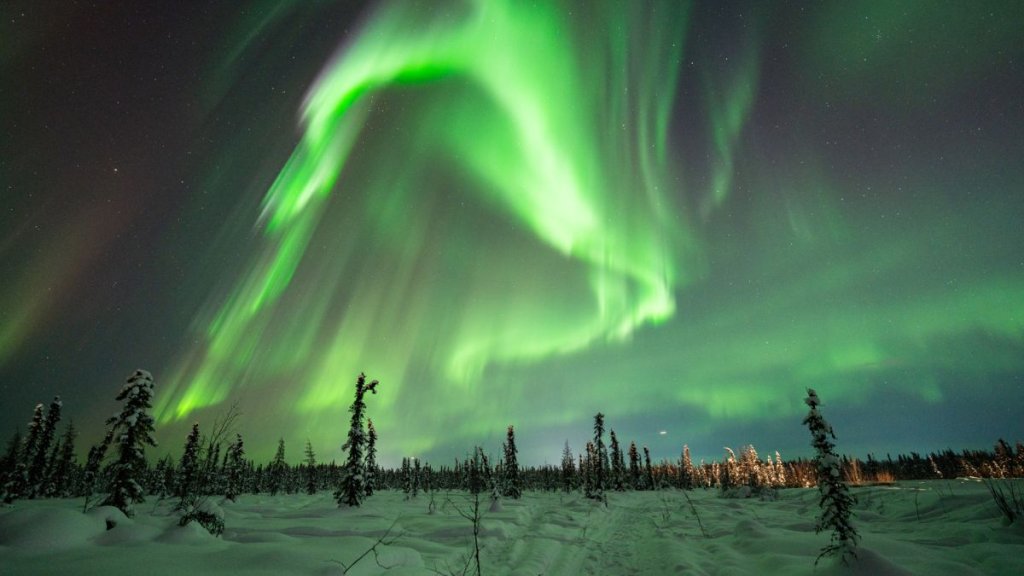A well-timed plasma eruption from the sun delivered a Valentine Day’s night of auroral splendor for skywatchers in Alaska, with the display’s intensity taking by surprise even seasoned aurora chasers.
Vincent Ledvina is no stranger to the sight of glimmering polar lights. Based in Fairbanks, Alaska, the space physics PhD student took his first aurora picture at the age of 16. Since then, he says on his website, he’s been hooked on the thrill of aurora chasing. This passion eventually led to him relocating from North Dakota to Alaska, the northernmost U.S. state that straddles the northern polar circle and therefore offers the nation’s best conditions for aurora viewing.
Vincent’s Twitter account and his website’s photo gallery are overflowing with stunning aurora pictures. Yet, in a series of tweets as excited as the particles in the atmosphere over Ledvina’s head, the photographer admitted that the auroras he saw on Valentine’s Day this year were out of the ordinary.
Related: Where to see the northern lights: 2023 aurora borealis guide
“Everything about tonight was insane,” Ledvina said in a tweet (opens in new tab) shared as his Valentine Day’s night of aurora viewing drew to a close. “One of the best nights of aurora of my life, maybe the best. We had substorm after substorm, it never let up.”
Everything about tonight was insane. One of the best nights of aurora of my life, maybe the best. We had substorm after substorm, it never let up.@TamithaSkov #aurora #northernlights pic.twitter.com/hVwmrCMVfWFebruary 15, 2023
In another tweet (opens in new tab), he called the experience “straight up magic.” In yet another, accompanied by an image of a shimmering ribbon of green and purplish glow suspended above the wintery landscape, he confessed that in all his years of aurora chasing, he had never seen such intense shades of red (opens in new tab) in an aurora.
The most intense red color I’ve seen pic.twitter.com/Sjqb4NubXzFebruary 15, 2023
To get the feel of the night, just head to Ledvina’s Twitter page (opens in new tab).
“That was freaking incredible. INSANE substorm. The whole sky is glowing, so cool, no other words. Wow!!!!” Ledvina said in yet another post (opens in new tab).
That was freaking incredible. INSANE substorm. The whole sky is glowing, so cool, no other words. Wow!!!! 😭😭 pic.twitter.com/au0jBODY6kFebruary 15, 2023
The burst of magnetized plasma, also known as a coronal mass ejection (CME), that delivered the magical night erupted from the sun on Saturday (Feb. 11) together with a powerful X-class solar flare. The X-flare, the most powerful type of solar radiation burst, briefly affected Earth immediately after it occurred, causing a temporary disruption to radio communications in South America. The CME particles travel through space at a much slower speed and therefore required nearly three days to arrive at our planet.
Follow Tereza Pultarova on Twitter @TerezaPultarova. Follow us on Twitter @Spacedotcom (opens in new tab) and on Facebook (opens in new tab).

